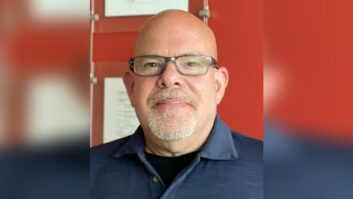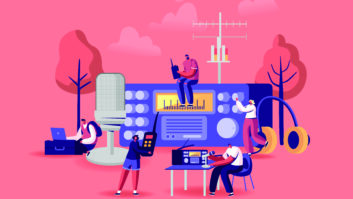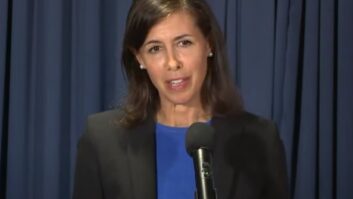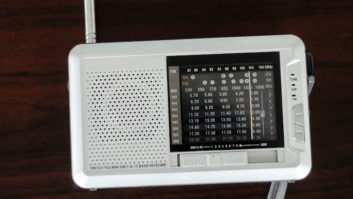
This image shows HD Radio reception performance of WHTZ(FM)’s digital signal, 20 dB below carrier, via an OEM automotive antenna along I-287 in Westchester County, N.Y. Comparisons are made to WLTW(FM)’s digital signal at –14 dBc.
HD Radio stations are raising power levels; just how many are doing so is the subject of a talk I’ll give on Sunday at the NAB Show.
In 2010, the Federal Communications Commission adopted new technical rules to permit FM stations voluntarily to increase hybrid digital power levels from –20 dBc to –14 dBc for most stations, and set a system to allow some stations to achieve up to –10 dBc.
I did some extensive research and digging into FCC records to find out how widely high-level power levels have been adopted. I knew from anecdotal evidence talking to engineers across the country that stations were increasing HD Radio power, but nobody could quantify that. I had asked the FCC and iBiquity the number of elevated HD power stations in operation, but both entities only were able to provide a partial picture.
I sorted through some FCC records to try to get some hard numbers on the increase. While the research I did does not offer the full count of increased stations, the numbers available, I think, are encouraging and show some significant progress. They were higher than I personally was expecting. There are approximately 365 stations running at some elevated digital power level as of early February. The paper breaks the findings down further.
My presentation also has a second part, exploring results of field testing that I’ve done on behalf of Clear Channel.
Over the last year and a half, I have driven thousands of miles in various markets, monitoring and logging the reception characteristics of elevated digital signals. The stations I have had the opportunity to study in depth have operated in the range between –14 dBc to –20 dBc. I focus on the differences of these two power levels in the paper.
I had been unable to locate any extensive performance studies of the –14 dBc power level, the most common power level deployed. All of the studies that were submitted on the record to the commission in the 2007–2008 timeframe were based on the full power increase to –10 dBc. The information in the paper could very well be the first time data is shared publicly on –14 dBc performance. The tests covered in the paper are in the New York and Los Angeles markets.
Also, some of our testing is more indicative of “real-world” automotive testing. I performed measurements using OEM “in glass” automotive antennas and I compared the differences between standard quarter wave antennas. This, too, has an impact on HD Radio reception performance in the automotive environment. Generally speaking, the “in glass” antennas do not perform as well as other antenna designs. In the paper, I compare how these antennas perform at the –14 dBc and – 20 dBc power levels.
Most automotive manufacturers are including HD Radio in many of their latest vehicles. Because of the increasing receiver base for HD Radio, and the growing importance of data delivery via HD Radio (Artist Experience, traffic data, etc.), I hope to add to the technical record of tangible benefits of elevated digital power.
The session is called “Field Observations of Elevated FM HD IBOC Power Levels.” Radio World will report on the detailed findings after the show.
Alan Jurison is a senior operations engineer for Clear Channel Media + Entertainment’s Engineering and Systems Integration Group. He holds several SBE certifications including CSRE, CBNE, AMD and DRB. His opinions are not necessarily those of Clear Channel or Radio World.







